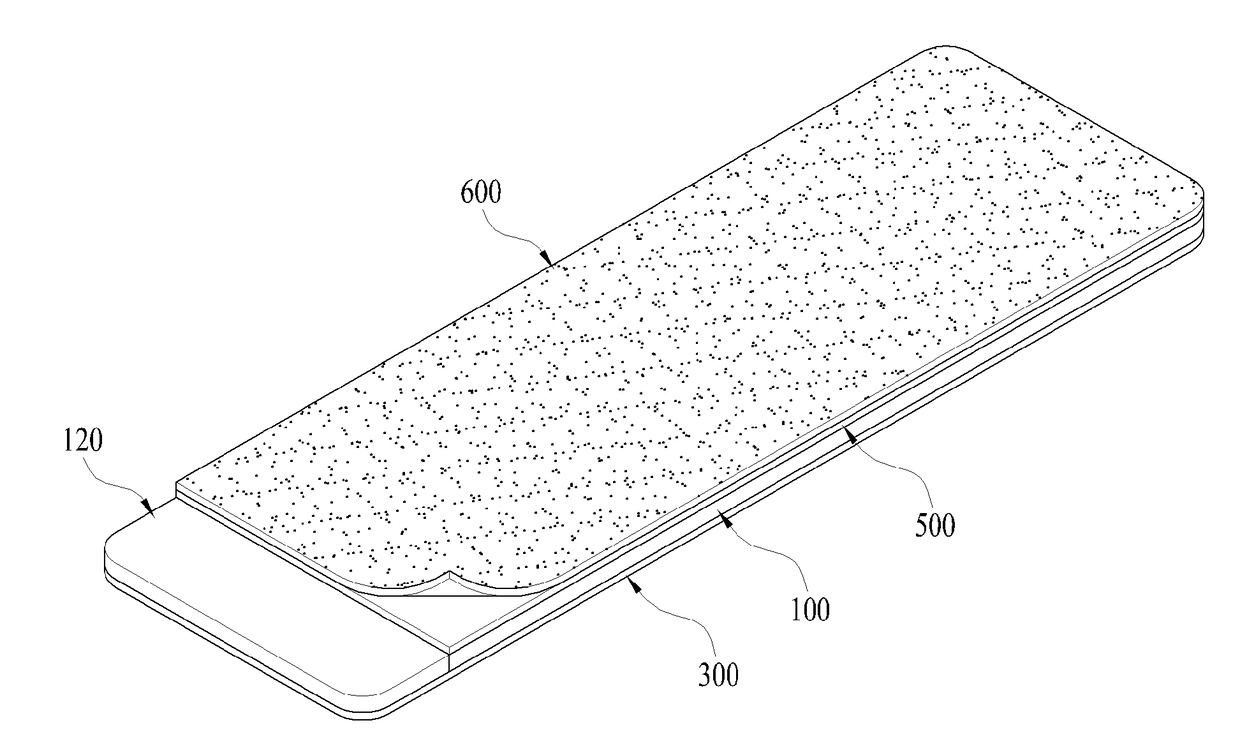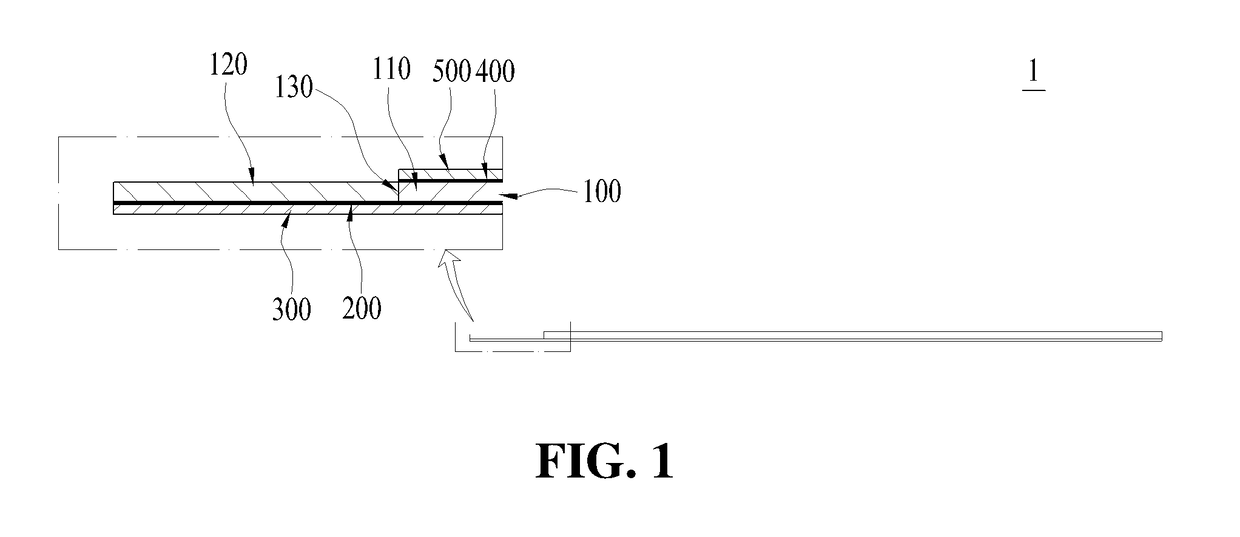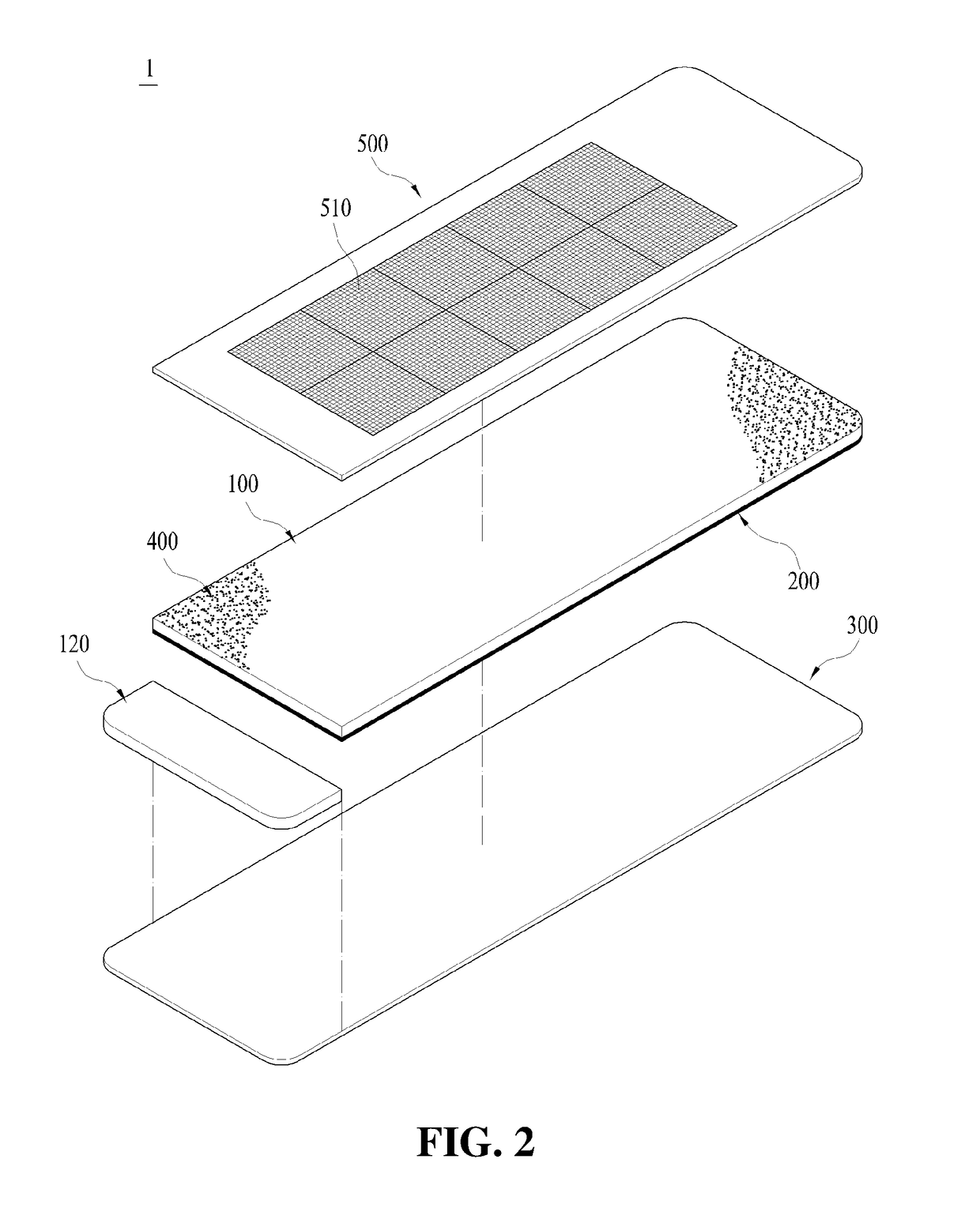Test film for detecting surface particles in clean room
a test film and surface particle technology, applied in the direction of material analysis, instruments, withdrawing sample devices, etc., can solve the problems of product defect, fatal product defect, product yield reduction, etc., to ensure the cleanliness of the clean room, easy and fast check whether or not the clean room is contaminated, and maintain the clean room
- Summary
- Abstract
- Description
- Claims
- Application Information
AI Technical Summary
Benefits of technology
Problems solved by technology
Method used
Image
Examples
Embodiment Construction
[0032]Hereinafter, a detailed description for implementing the test film for detecting the surface particles of the clean room according to the present invention will be described in detail by exemplifying embodiments with reference to the drawings.
[0033]According to a report on “Research on Development of Super Clean Room of Class 1” issued by the Ministry of Science and Technology in October 1992, it is generally known that adhesion of particles occurred in a clean room to the surface is the most important matter in view of contamination control in a clean room, wherein the particles floating in the air in the clean room reach very close to the surface due to Brownian diffusion, turbulent diffusion, external force and the like, and at this time, the potential energy exists and the particles have a minimum energy in the immediate vicinity of the surface of the object to be measured by Van der Waals force or the like, and in general, when the minimum value of this energy (φ) is smal...
PUM
 Login to View More
Login to View More Abstract
Description
Claims
Application Information
 Login to View More
Login to View More - R&D
- Intellectual Property
- Life Sciences
- Materials
- Tech Scout
- Unparalleled Data Quality
- Higher Quality Content
- 60% Fewer Hallucinations
Browse by: Latest US Patents, China's latest patents, Technical Efficacy Thesaurus, Application Domain, Technology Topic, Popular Technical Reports.
© 2025 PatSnap. All rights reserved.Legal|Privacy policy|Modern Slavery Act Transparency Statement|Sitemap|About US| Contact US: help@patsnap.com



